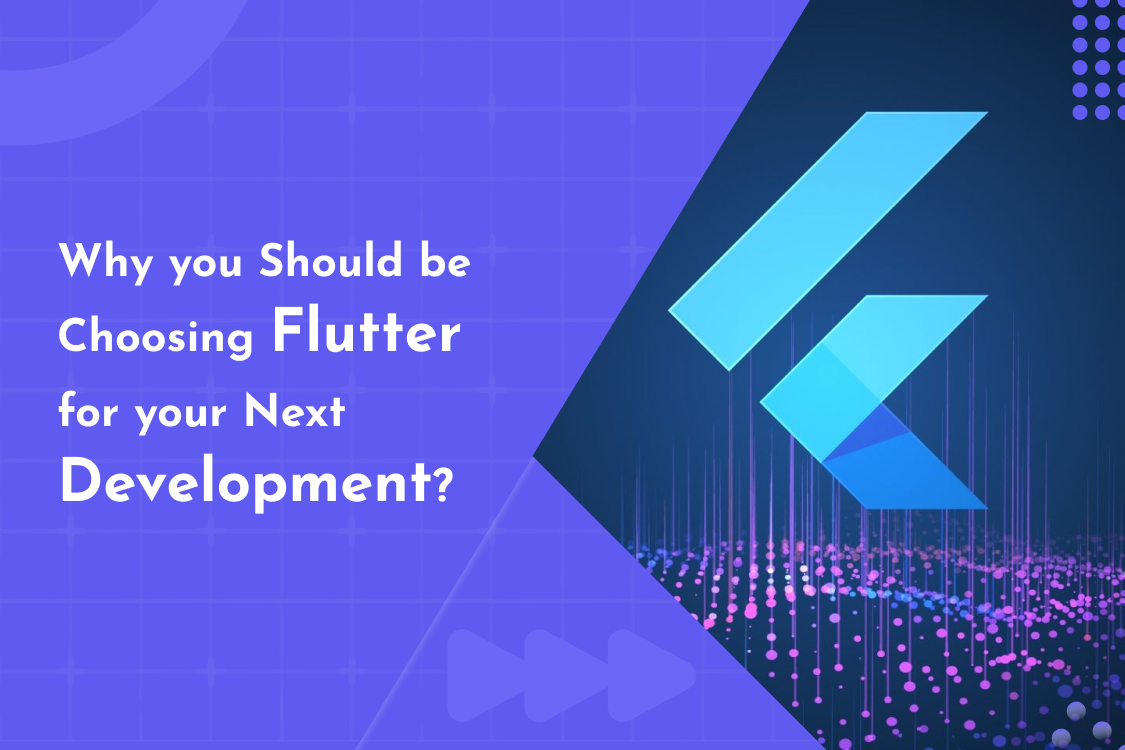We love to hear from you about your project.

If you're thinking about developing a mobile app, chances are you've come across Flutter. But why is it so popular? What makes Flutter stand out in the crowded world of app development? In this blog, we'll explore everything you need to know about Flutter for app development , and why it might just be the best framework for your next project.
Flutter is an open-source framework created by Google. It’s used to build natively compiled applications for mobile, web, and desktop from a single codebase. The beauty of Flutter lies in its ability to let developers write one code that runs on both iOS and Android, which drastically cuts down development time and costs.
Unlike many other frameworks, Flutter allows developers to create beautiful, high-performance apps that feel native to both operating systems, without needing to learn separate languages or development environments for each platform.
Flutter offers a feature called “hot reload,” which lets developers see changes instantly in the app without restarting it. This means faster iteration times and a smoother development experience. If you need to tweak your app’s interface or functionality, hot reload lets you do it in seconds, saving time and improving productivity.
One of the biggest advantages of Flutter is the ability to write a single codebase that works across both iOS and Android platforms. This not only saves time and resources but also makes maintaining the app easier because you’re only updating one version instead of two separate ones. This cross-platform capability helps businesses save on development costs, making Flutter an appealing option for startups and established companies alike.
Flutter comes with a rich set of pre-designed widgets that help developers create beautiful, customizable UIs. Whether you’re designing a sleek modern interface or a more traditional layout, Flutter’s widgets can be easily customized to suit your needs. The flexibility offered by these widgets allows for the creation of unique and consistent designs across both platforms.
Flutter is known for its high performance. Unlike some cross-platform frameworks that rely on web views or bridges to interact with native code, Flutter compiles directly to native ARM code, making it much faster. The result? Apps that feel native in terms of speed and responsiveness, with smooth animations and transitions.
Since its release, Flutter’s ecosystem has grown rapidly. It has an active community, tons of learning resources, and frequent updates from Google. This means developers can easily find solutions to common problems and keep their apps up-to-date with the latest features. With support for various libraries and plugins, Flutter is becoming increasingly powerful and versatile.
While there are plenty of frameworks available, Flutter stands out for several reasons.
Compared to Xamarin or React Native, Flutter is more efficient in terms of development time and app performance. While other frameworks require more effort to bridge the gap between native and cross-platform development, Flutter’s architecture is designed to deliver an experience closer to native applications.
While Flutter has many advantages, it’s not without its challenges. One of the common concerns is the larger app size, especially when compared to native apps. Additionally, Flutter is still maturing, so there are fewer libraries and tools available than for more established frameworks.
But despite these challenges, Flutter is rapidly gaining traction because of its ability to build apps that are both visually appealing and highly functional.
Flutter is primarily used to develop mobile applications for both iOS and Android from a single codebase. It’s also used for building web and desktop applications.
Flutter speeds up the development process significantly due to its hot reload feature, which allows developers to see changes instantly. This results in faster iterations and shorter development cycles.
Flutter offers better performance than React Native because it directly compiles to native code, while React Native uses a bridge to communicate with native code. Flutter also allows for more flexible and customized UI development with its rich set of widgets.
Yes, Flutter allows you to write one codebase that works for both iOS and Android, making it an excellent choice for cross-platform app development.
Flutter uses Dart, a language developed by Google. If you’re familiar with languages like JavaScript or Java, Dart is relatively easy to pick up, making it approachable for many developers.
Flutter is a powerful, efficient, and flexible framework that simplifies mobile app development. Whether you’re building for iOS, Android, or both, Flutter enables you to create high-quality apps with a native-like experience. Its growing community and extensive set of tools make it a solid choice for both startups and large enterprises looking to develop cross-platform apps quickly and affordably.
If you’re ready to build your next app, consider using Flutter — it might just be the perfect framework to bring your ideas to life.
Note: Give us a call or leave a message, we endeavour to answer all enquiries within 24 hours on business days.
We love to hear from you about your project.
If you want to get a free consultation without any obligations, fill in the form below and we’ll get in touch with you.